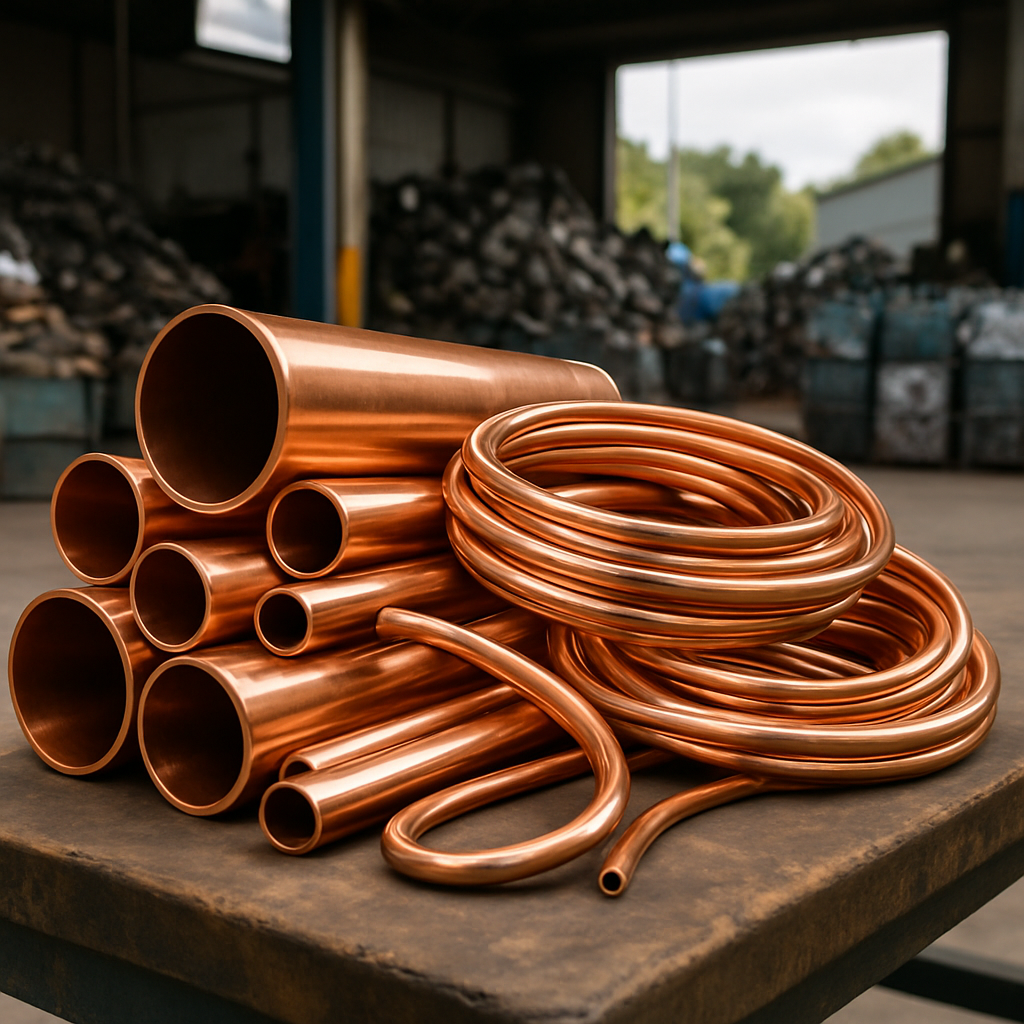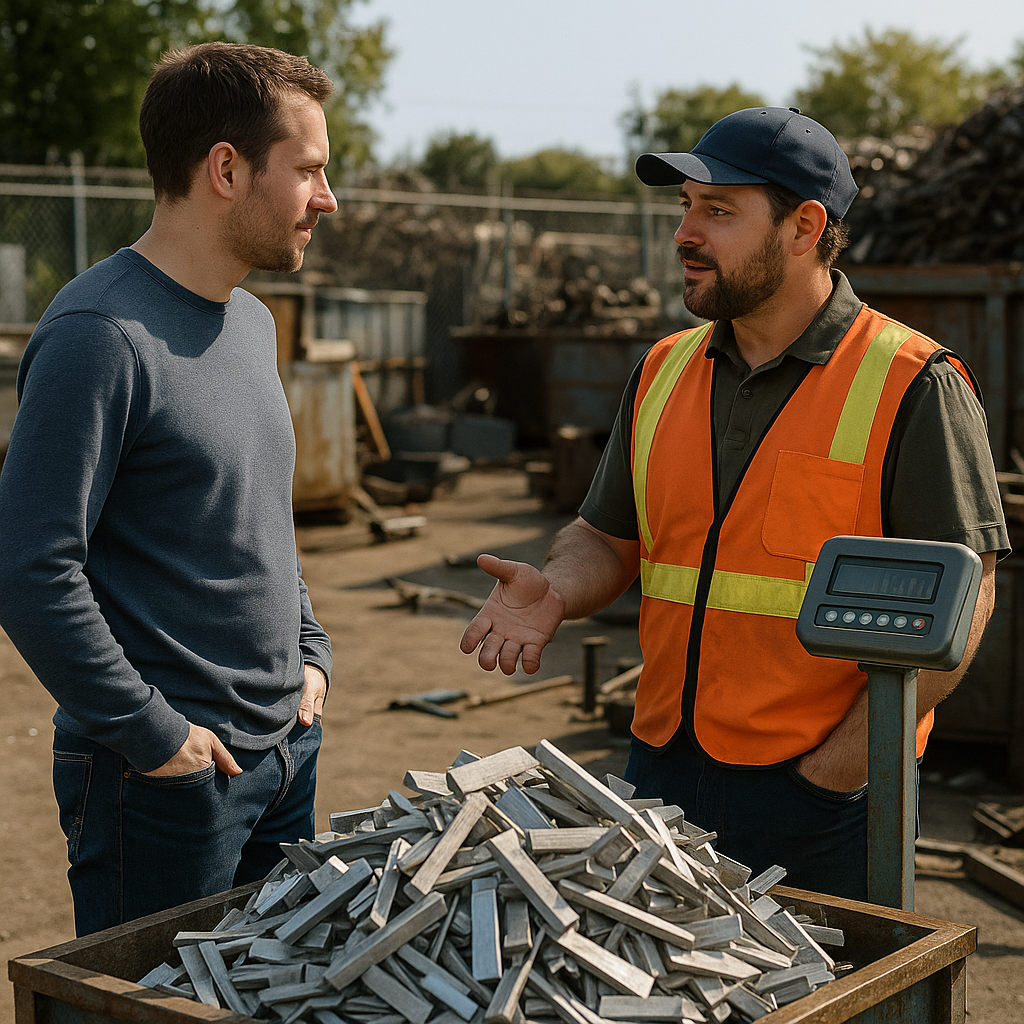5901 Botham Jean Blvd, Dallas, TX 75215
How to Maximize Scrap Metal Profits: A Quick Guide
May 28, 2025The global scrap metal recycling market is projected to grow from $55.20 million in 2020 to $83.77 million by 2028, representing a 7.2% compound annual growth rate. This expanding market offers significant financial opportunities for those who understand how to navigate it effectively.
Scrap metal recycling isn’t just environmentally responsible; it can be highly profitable when approached strategically. The difference between modest returns and substantial profits often lies in understanding market dynamics and implementing proper handling techniques.
This guide explores how to significantly increase your earnings through strategic market monitoring, effective metal sorting methods, and smart selling practices. Whether you’re a business owner with industrial scrap or managing municipal recycling programs, these principles can transform metal waste into a valuable revenue stream.
How Can Proper Sorting and Preparation Increase Your Profits?

Proper sorting and preparation of scrap metal directly impact your bottom line. Unsorted or poorly prepared materials can decrease value by 20-40% compared to well-sorted scrap. The extra effort you put into organization translates directly into higher payouts from recycling facilities.
Separating ferrous (magnetic) metals from non-ferrous (non-magnetic) materials is an essential first step. A simple magnet test can instantly divide your collection into these two valuable categories. Non-ferrous metals like copper, aluminum, and brass typically command significantly higher prices per pound.
Within each metal category, further sorting by grade substantially increases value. For instance, the Institute of Scrap Recycling Industries notes that grade-based sorting can boost material value by 15-40%. The price difference between #1 copper and #2 copper can be 10-30% per pound.
Essential Sorting and Preparation Steps
- Remove non-metal components – Eliminate plastic, rubber, wood, and other contaminants that reduce purity and value.
- Separate by metal type – Keep copper, aluminum, steel, and brass in distinct containers to prevent cross-contamination.
- Classify by grade – Sort metals by their specific quality grades (e.g., bare bright copper vs. #2 copper).
- Clean your metals – Remove dirt, grease, and oxidation using wire brushes or appropriate solvents.
- Cut large pieces – Break down oversized items into manageable sections for easier transportation.
- Weigh materials accurately – Use reliable scales to pre-weigh your sorted metals.
- Label containers clearly – Mark each container with metal type, weight, and container weight for efficiency.
Consider the example of copper wire recycling. Unsorted copper wire with insulation intact might fetch around $1.70 per pound. However, if you take the time to strip the insulation, sort by grade, and deliver clean copper, you could receive up to $3.20 per pound for bare bright copper—nearly double the value.
Organization Systems That Maximize Value
Creating a dedicated sorting space improves both safety and efficiency. Designate specific areas for different metal types and processing stages. Proper containers for each metal category prevent cross-contamination that can reduce value.
Investing in basic tools makes the sorting process more effective. A strong magnet, wire strippers, metal snips, and protective gear are essential. For serious collectors, consider a small file set for testing metal composition when identification is challenging.
Keep records of your sorted materials, including weights and estimated values. This information helps track market trends and identify which materials yield the highest returns. Digital tracking systems can streamline this process for larger operations.
| Metal Type | Mixed/Unsorted Price | Properly Sorted Price | Potential Increase |
|---|---|---|---|
| Copper | -30% to -50% of optimal | 100% of market value | Up to 50% more |
| Aluminum | -20% to -40% of optimal | 100% of market value | Up to 40% more |
| Brass | -15% to -30% of optimal | 100% of market value | Up to 30% more |
| Stainless Steel | Often missed in mixed scrap | Properly valued | Up to 300% more |
Regular maintenance of your sorting system ensures continued effectiveness. Periodically review your processes and look for opportunities to improve efficiency. The recycling industry evolves, so staying informed about current best practices keeps your operation competitive and profitable.
What Are the Best Practices for Selling at Scrap Yards?

Selling scrap metal can be both rewarding and challenging. The difference between getting fair market value and being shortchanged often comes down to preparation. Always call ahead to check current prices before loading your vehicle. Request the name of the person providing the quote to create accountability and have a specific contact if discrepancies arise.
When you arrive at the scrap yard, position yourself where you can clearly observe the weighing process. Many experienced scrappers insist on watching their materials being weighed. This simple step prevents potential weight discrepancies that could cost you money. Ask questions if something doesn’t look right.
The receipt verification stage is crucial. Before leaving the yard, carefully check your ticket to ensure the weights and prices match what was quoted over the phone. Look for three key numbers: gross weight (total weight including containers), tare weight (weight of containers), and net weight (the actual metal weight you get paid for). Ensure the math is correct.
One local contractor learned this lesson after noticing a 15-pound discrepancy on his brass recycling ticket. By politely questioning the scale manager and showing his notes from their earlier phone conversation, he received an additional $45 that would have otherwise been lost.
Don’t hesitate to speak up about discrepancies. Most legitimate yards will correct honest mistakes. Approach the situation professionally, avoiding accusations. If you feel the issue isn’t resolved satisfactorily, be prepared to take your business elsewhere in the future.
Price negotiation is another important aspect of scrap metal selling. While not all yards advertise this fact, prices are often negotiable, especially for larger quantities or consistent business. Building relationships with yard owners can lead to better rates over time. Remember that scrap yards need to make a profit too, so keep negotiations realistic and professional.
Knowing your metal types is essential for maximizing profits. Separating different metals before arrival typically results in better pricing than mixed loads. Clean metals fetch higher prices, so consider removing non-metallic attachments and contaminants when possible.
Finally, timing your sales strategically can increase your profits. Metal prices fluctuate based on global markets and economic conditions. Some experienced scrappers monitor market trends and hold valuable metals during price dips, selling when prices rise again.
How Can You Stay Informed on Market Trends to Maximize Earnings?
Scrap metal prices fluctuate regularly based on numerous market factors, significantly impacting potential earnings. Understanding these price movements and monitoring trends provides a strategic advantage when deciding when to sell.
Tracking Price Fluctuations
Metal prices often peak during spring and summer due to increased construction activity. This seasonal pattern creates higher demand for materials, driving up scrap values. Conversely, winter months, particularly between Thanksgiving and New Year’s, typically see lower prices.
The midweek period (Tuesday through Thursday) often presents better selling opportunities. Many scrap yards experience higher traffic on Mondays and Fridays when contractors and weekend scrappers bring in materials. Visiting yards during less busy times can ensure faster service and better attention to your load.
Digital Tools for Market Monitoring
Reliable apps and websites have transformed how scrappers track market conditions. These digital tools act like personal metal market assistants, providing valuable data at your fingertips.
The iScrap App offers comprehensive information on metal prices and helps locate nearby scrap yards, empowering users to make informed decisions by monitoring local price trends. Similarly, Metaloop provides a specialized price index tracking fluctuations for various metals, including aluminum, copper, brass, and stainless steel.
Are you using any tools to monitor scrap metal prices, or might you be leaving money on the table by selling at suboptimal times?
Economic Indicators Affecting Prices
Global economic conditions directly impact scrap metal values. Construction industry activity, manufacturing demands, and international trade dynamics all influence pricing. Staying informed about these broader economic factors helps predict potential market shifts.
Price automation systems have revolutionized market monitoring by tracking price trends automatically, sending alerts when prices change, comparing rates from different yards, and indicating optimal selling times. This technology removes the guesswork from timing your sales.
The Metaloop Price Index specifically tracks price movements relative to market forces and economic indicators in the industry. While it doesn’t list actual sale prices, it helps users understand how scrap metal values shift over time, providing important context for decision-making.
Conclusion: Maximizing Your Scrap Metal Profits

Achieving success in the scrap metal industry requires strategic planning and attention to detail. Properly sorting and categorizing metals, staying updated on market trends, and building relationships with reputable buyers can significantly increase your earnings. Each step in the recycling process—from collection and preparation to the final sale—offers opportunities to boost profits.
When you’re ready to enhance your recycling profits beyond scrap metal, contact Okon Recycling at 214-717-4083. Our team of specialists can guide you through the recycling process and ensure you receive the best value for your materials.
